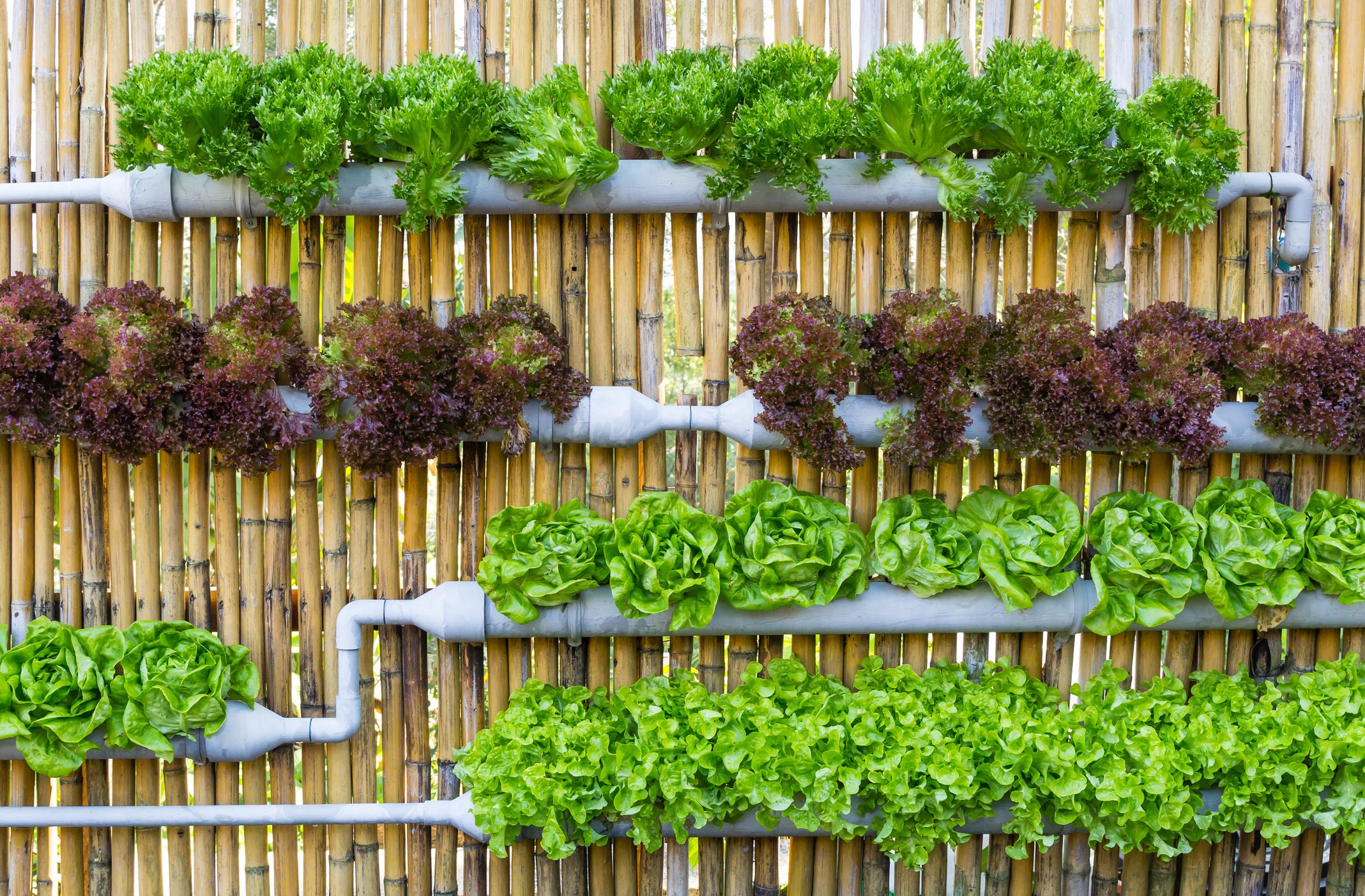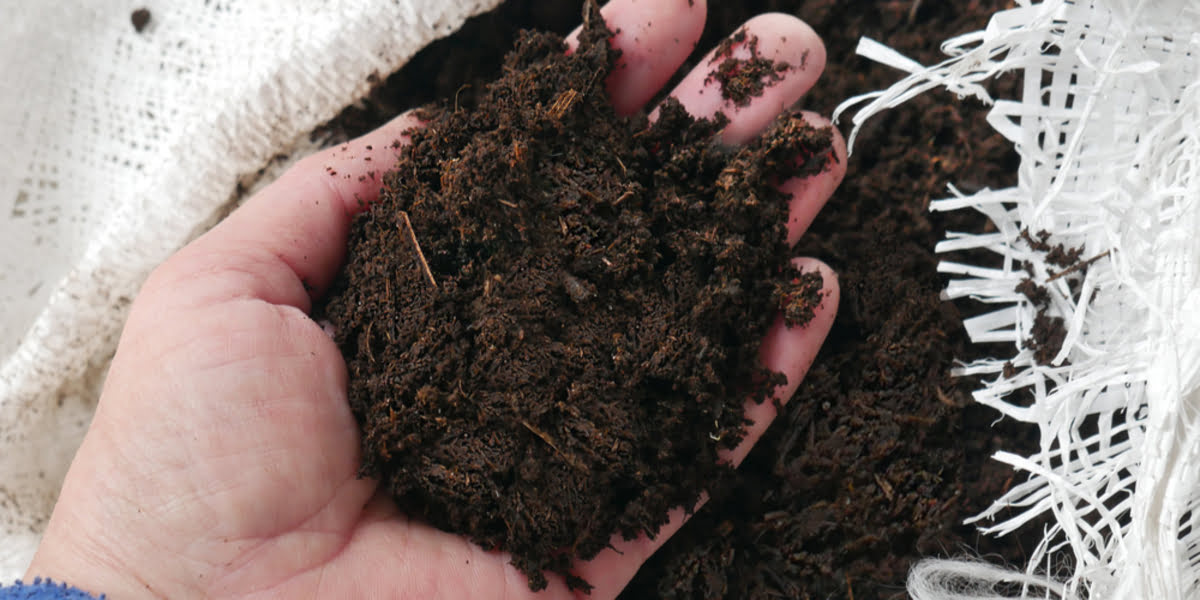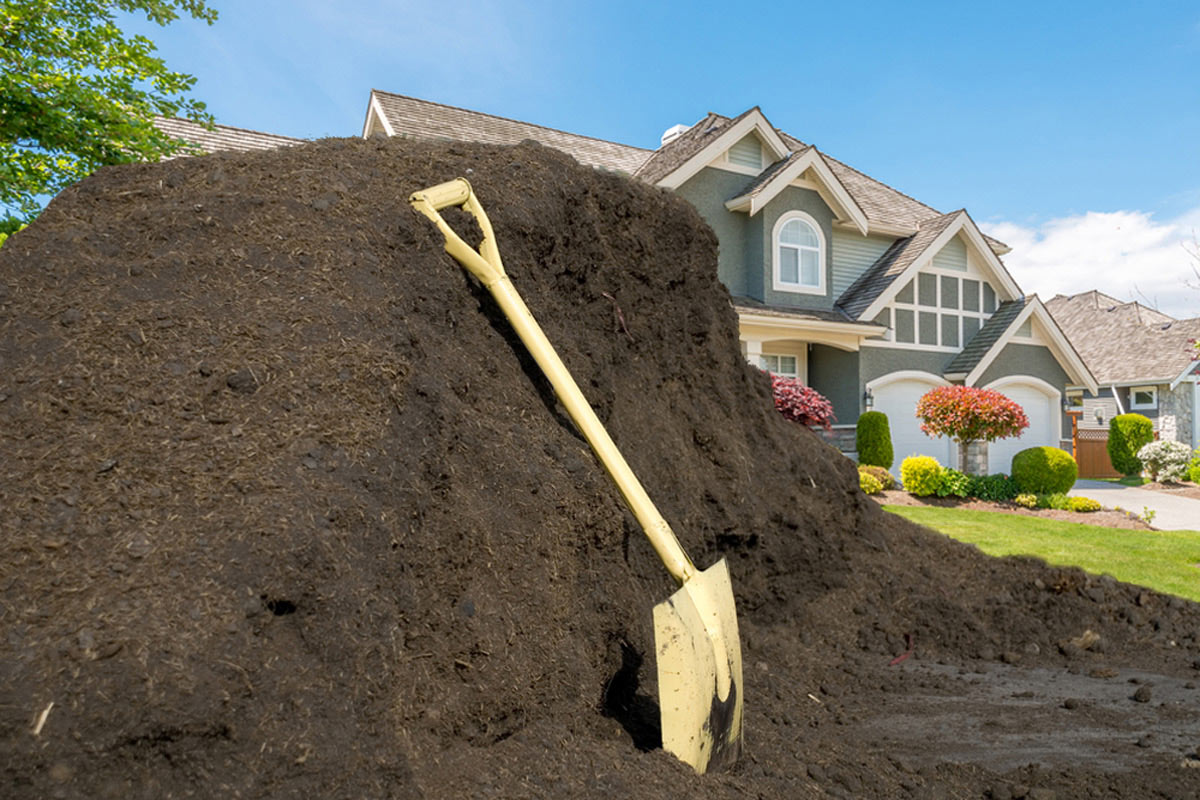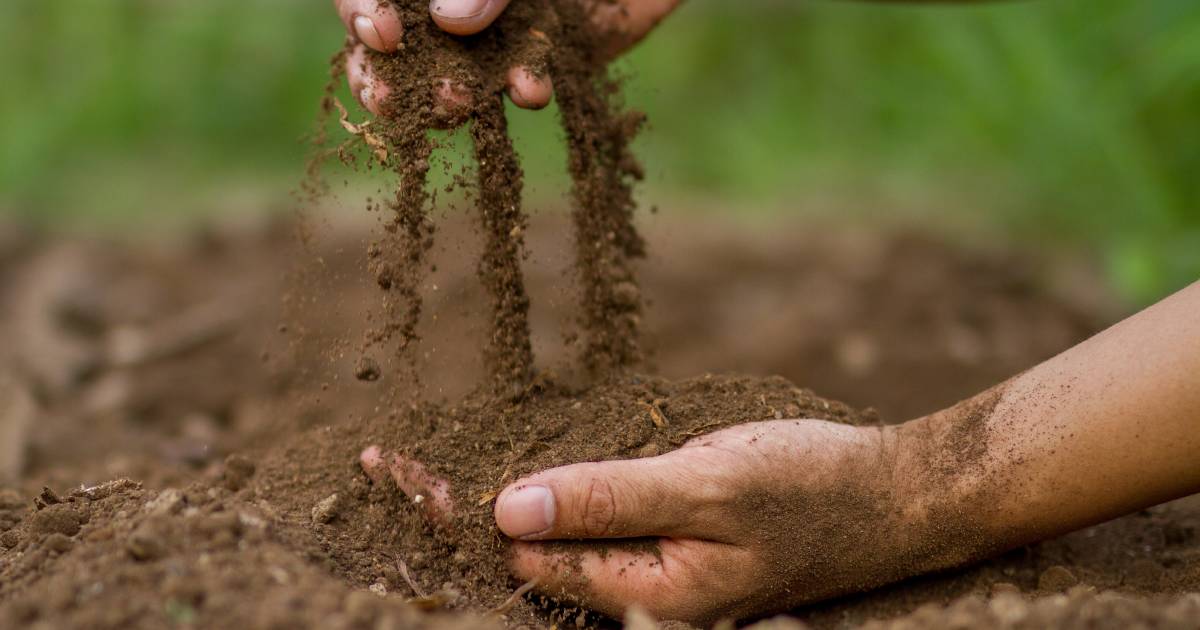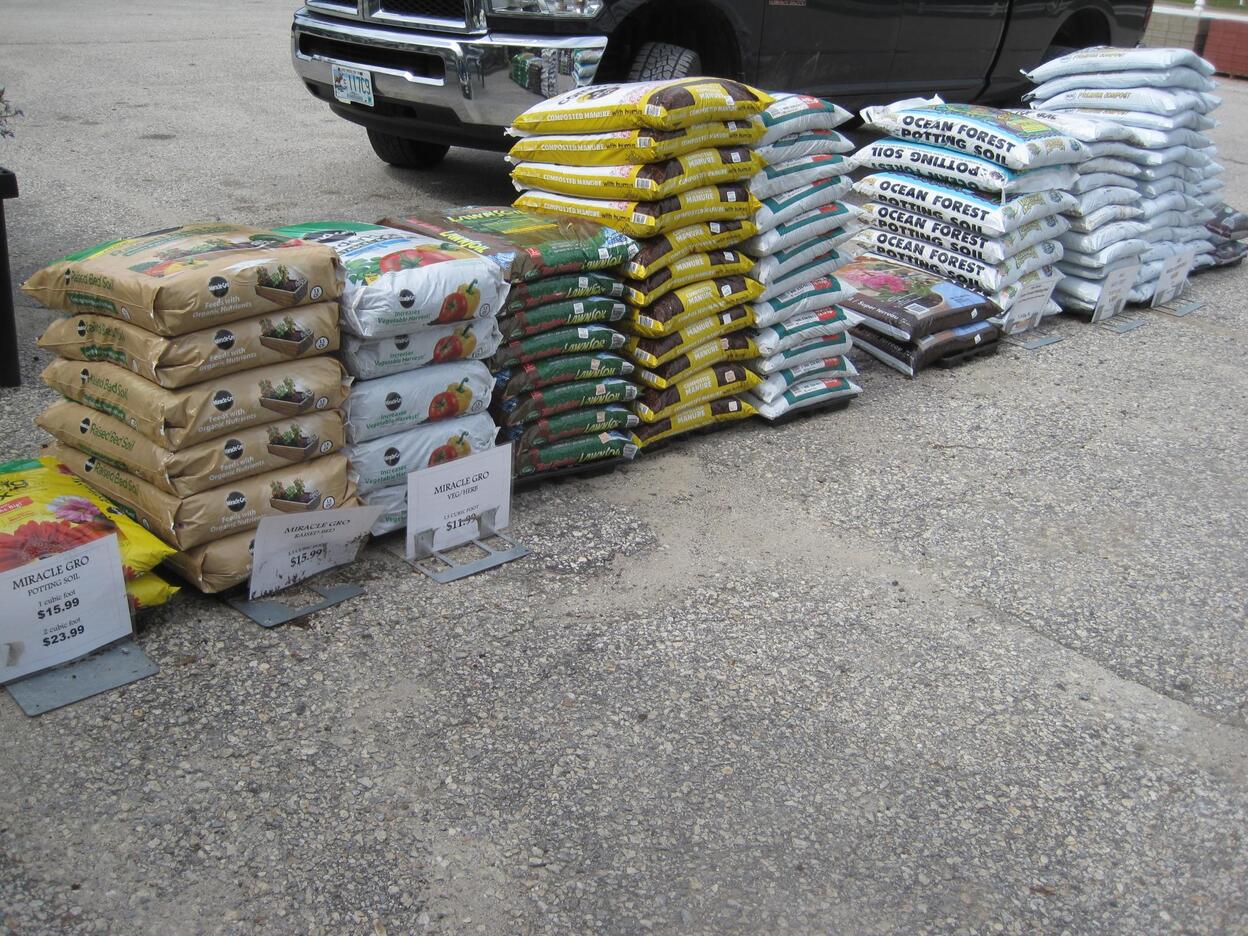Home>Gardening Basics>Understanding Soil>How To Make Topsoil To Sell
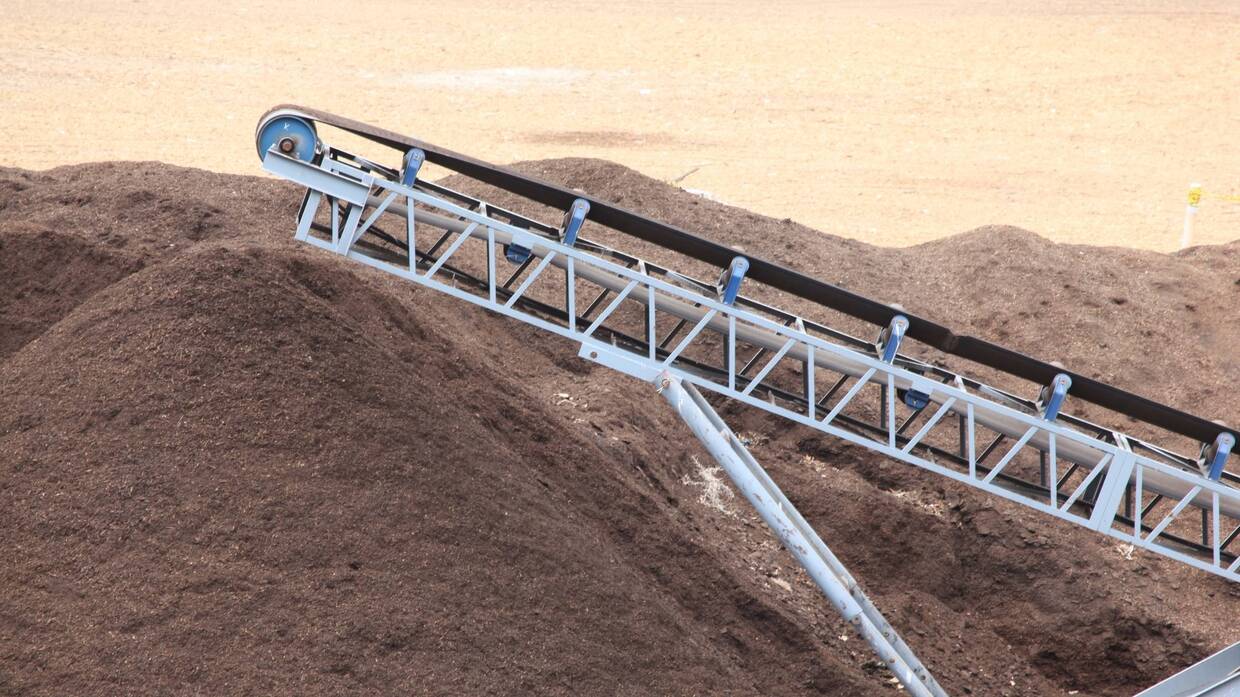

Understanding Soil
How To Make Topsoil To Sell
Modified: January 22, 2024
Learn the step-by-step process of crafting high-quality topsoil to fulfill market demand. Increase your understanding of soil and its composition to produce profitable results.
(Many of the links in this article redirect to a specific reviewed product. Your purchase of these products through affiliate links helps to generate commission for Chicagolandgardening.com, at no extra cost. Learn more)
Table of Contents
- Introduction
- Understanding the Importance of Topsoil
- Assessing the Market Demand for Topsoil
- Determining the Composition and Quality of Topsoil
- Gathering the Necessary Resources and Equipment
- Steps to Make Topsoil for Selling
- Screening and Removing Impurities
- Testing and Adjusting the pH Level
- Enhancing Nutrient Content
- Maintaining Moisture and Aeration
- Packaging and Transportation Considerations
- Marketing and Selling Your Topsoil
- Conclusion
Introduction
Welcome to the world of topsoil! As an SEO expert with deep understanding of soil, I’m here to guide you on creating a comprehensive and engaging article about making topsoil for selling. The quality of soil plays a crucial role in plant growth and agriculture, making topsoil a valuable commodity in the landscaping, gardening, and construction industries.
Topsoil is the uppermost layer of soil where most of the nutrients and organic matter are found. It is the foundation for healthy plant growth and provides crucial support for the ecosystem. Whether you are a landscaper looking to expand your business or an entrepreneur seeking a new venture, understanding how to make and sell topsoil can be an excellent opportunity to capitalize on the growing demand for quality soil.
In this article, we will delve into the importance of topsoil, explore the market demand for this valuable resource, discuss the composition and quality of topsoil, and guide you step-by-step on how to make and sell topsoil successfully. So, let’s roll up our sleeves and get our hands dirty!
Understanding the Importance of Topsoil
Topsoil is often referred to as the “skin of the Earth,” and for good reason. It is the uppermost layer of soil, typically ranging from 2 to 8 inches in depth, where a majority of the soil’s critical components exist. This includes a mixture of organic matter, minerals, water, and air spaces. The health and fertility of topsoil are essential for sustaining plant life and supporting a thriving ecosystem.
One of the primary roles of topsoil is to provide a hospitable environment for plant root development. It serves as a medium for plants to anchor their roots, absorb water, and obtain essential nutrients. Quality topsoil contains a balance of clay, silt, and sand particles, allowing for optimal water drainage and retention. Without adequate topsoil, plants may struggle to establish strong root systems, leading to stunted growth and reduced yields.
Besides its importance for plant growth, topsoil also plays a crucial role in supporting various ecosystem services. It acts as a natural filter, preventing pollutants from reaching groundwater supplies. Topsoil helps regulate water flow and reduces the risk of erosion by absorbing excess rainwater. It also acts as a reservoir for beneficial microbial activity, fostering soil health and promoting nutrient cycling.
In addition, topsoil serves as a habitat for numerous organisms, including earthworms, insects, fungi, and bacteria. These organisms contribute to the breakdown of organic matter, nutrient cycling, and soil structure formation. A healthy and diverse topsoil ecosystem not only benefits plants but also promotes biodiversity and overall ecological resilience.
Beyond its ecological importance, topsoil is in high demand for various human activities such as landscaping, gardening, and construction. Landscapers and gardeners rely on quality topsoil to create aesthetically pleasing outdoor spaces and establish healthy gardens. Topsoil is also essential for construction projects, providing a stable foundation for buildings, roads, and other infrastructure.
Understanding the vital role of topsoil in supporting plant growth and maintaining ecosystem health is crucial for appreciating its value. By recognizing the significance of topsoil, we can better understand why it is in demand and how we can contribute to its production and preservation.
Assessing the Market Demand for Topsoil
Before diving into the process of making and selling topsoil, it is essential to assess the market demand and ensure there is a viable customer base for your product. Understanding the market will help you tailor your approach, determine pricing, and develop effective marketing strategies.
The demand for topsoil can vary based on factors such as geographical location, population density, and local landscaping and gardening trends. Conducting market research and analysis will provide valuable insights into the current demand and potential opportunities. Consider the following strategies to assess the market demand for topsoil:
- Local customer survey: Engage with potential customers, such as landscapers, gardeners, and construction companies, to gather information about their topsoil needs. Determine the quantity, quality, and frequency of topsoil required in your target market.
- Competitor analysis: Study existing topsoil suppliers in your area. Identify their prices, product offerings, and customer reviews. This will help you understand the level of competition and differentiate your product.
- Industry trends and forecasts: Stay updated on landscaping and gardening trends, as well as construction projects in your area. This information can provide insights into potential future demand for topsoil.
- Collaboration with local businesses: Establish relationships with local nurseries, landscaping companies, and garden centers. They can provide valuable insights into the market and also become potential partners or customers for your topsoil.
- Online platforms: Utilize online marketplaces and social media channels to gauge the demand for topsoil. Participate in relevant forums and groups to connect with potential customers and gather feedback.
By thoroughly assessing the market demand for topsoil, you can identify a target market and tailor your production and marketing strategies accordingly. This knowledge will enable you to meet customer requirements effectively and position your topsoil business for success.
Determining the Composition and Quality of Topsoil
Topsoil composition and quality are crucial factors in producing a nutrient-rich and fertile soil for selling. Understanding the composition and assessing the quality of topsoil will help you create a product that meets the needs and expectations of your customers.
The composition of topsoil refers to the relative proportions of sand, silt, clay, and organic matter. While these components may vary depending on geographic location and soil types, a balanced mixture is essential for optimal plant growth. Here are the key aspects to consider when determining the composition of topsoil:
- Particle Size: The particle size distribution of topsoil affects its water-holding capacity, drainage, and aeration. Sandy soils drain rapidly but may not retain sufficient moisture, while clay soils hold more water but drain poorly. The ideal topsoil composition includes a mixture of sand, silt, and clay particles.
- Organic Matter Content: Organic matter is the decomposed remains of plants and animals, providing essential nutrients and improving soil structure. The presence of organic matter enhances water retention, nutrient availability, and microbial activity. Aim for a topsoil composition with a healthy percentage of organic matter.
- Nutrient Levels: Topsoil should contain adequate levels of essential nutrients for plant growth, including nitrogen, phosphorus, and potassium. Conducting soil tests can help determine the nutrient content and identify any deficiencies or excesses that need to be addressed through organic or synthetic amendments.
- pH Level: The pH level of topsoil influences nutrient availability to plants. Most plants prefer a slightly acidic to neutral pH range, typically between 5.5 and 7.0. Test the pH level of the topsoil and make necessary adjustments to create an optimal growing environment.
- Texture and Structure: The texture and structure of topsoil influence root penetration, water movement, and soil fertility. Assess the soil’s crumbly texture, which allows for root growth, and ensure the presence of well-defined soil aggregates that promote good drainage and aeration.
Assessing the quality of topsoil is equally important. High-quality topsoil should be free from contaminants such as weed seeds, pesticides, heavy metals, and harmful pathogens. Conduct regular inspections and quality checks to ensure that your topsoil meets industry standards and customer expectations.
By understanding the composition and quality of topsoil, you can optimize the production process and create a product that is rich in nutrients, well-structured, and free from contaminants. Providing topsoil of superior quality will build trust with your customers and set your business apart in the market.
Gathering the Necessary Resources and Equipment
Once you have a clear understanding of the composition and quality requirements for topsoil, it’s time to gather the necessary resources and equipment to begin the production process. Having the right tools and materials will ensure efficiency and consistency in producing high-quality topsoil for selling.
Here are the essential resources and equipment you will need:
- Raw Materials: Start by identifying sources for the raw materials needed to create topsoil. This may include obtaining high-quality loam, compost, sand, and other organic amendments. Ensure that these materials are free from contaminants and meet the quality standards for topsoil production.
- Screening Equipment: Topsoil needs to be well-screened to remove debris, rocks, and large clumps. Invest in a sturdy and efficient screening machine, such as a trommel or vibrating screen, to separate the desired particle size fraction.
- Soil Testing Kits: Soil testing kits are essential for analyzing the nutrient content and pH level of the topsoil. Purchase soil testing kits that include pH meters, nutrient testing solutions, and other necessary tools to monitor and adjust the soil properties as needed.
- Mixing Equipment: Depending on the scale of your operation, consider investing in mixing equipment such as a compost turner or a rototiller. These machines will help blend the raw materials uniformly and promote the decomposition of organic matter.
- Storage Containers: You will need storage containers such as bins or pallets to hold and protect the finished topsoil before packaging. Ensure that the containers are clean, properly sealed, and labeled for easy identification.
- Transportation Tools: If you plan to deliver the topsoil directly to customers, you will need appropriate transportation tools such as trucks or trailers. Make sure these vehicles are well-maintained and equipped to handle the weight and volume of the topsoil.
- Safety Gear: Don’t forget to prioritize safety! Stock up on personal protective equipment (PPE) such as gloves, masks, goggles, and sturdy footwear to protect yourself and your employees from potential hazards.
Once you have gathered the necessary resources and equipment, ensure that everything is in good working condition and regularly maintained. Properly functioning tools and materials will enable you to produce topsoil efficiently and consistently, resulting in a high-quality product that meets customer expectations.
Steps to Make Topsoil for Selling
Now that you have the necessary resources and equipment in place, let’s walk through the step-by-step process of making topsoil for selling. This process will ensure that you produce a high-quality product that meets the needs of your customers.
Here are the essential steps to follow:
- Step 1: Collect and Prepare Raw Materials: Gather the raw materials such as loam, compost, sand, and organic amendments. Ensure that these materials are of high quality and free from contaminants. Store them in a convenient location for easy access.
- Step 2: Screen the Materials: Use your screening equipment to remove any debris, rocks, or large clumps from the raw materials. This step is crucial in creating a fine and consistent particle size for the topsoil.
- Step 3: Mix the Materials: In a designated mixing area, blend the screened materials thoroughly. Use mixing equipment such as a compost turner or rototiller to ensure a uniform composition in the topsoil. This step helps incorporate the organic amendments and promote the decomposition of organic matter.
- Step 4: Test and Adjust the Soil: Take samples of the mixed topsoil and use soil testing kits to analyze the nutrient content and pH level. Adjust the soil properties as needed by adding organic or synthetic amendments to enhance fertility and achieve the desired pH level.
- Step 5: Maintain Moisture and Aeration: Proper moisture content and aeration are essential for allowing beneficial microbial activity and root development. Regularly monitor and adjust the moisture level in the topsoil. Use equipment such as sprinklers or irrigation systems to provide adequate water and ensure proper drainage.
- Step 6: Monitor the Decomposition Process: Keep an eye on the decomposition process of organic matter in the topsoil. Regularly turn or agitate the mixture to promote decomposition and maintain a well-aerated soil structure.
- Step 7: Quality Control and Testing: Conduct periodic quality control checks on the topsoil. Ensure that it meets the desired composition, nutrient levels, and pH range. Address any issues promptly to maintain a consistent and high-quality product.
By following these steps, you will be able to produce topsoil that is rich in nutrients, well-structured, and free from contaminants. Regular monitoring and quality control measures will help maintain the consistency of the topsoil, meeting the expectations of your customers and establishing a strong reputation in the market.
Screening and Removing Impurities
One of the crucial steps in the process of making topsoil for selling is screening and removing impurities. This step ensures that the final product is of high quality, free from debris, rocks, and other unwanted materials.
Here’s a detailed guide on how to effectively screen and remove impurities from the raw materials:
- Choose the Right Screening Equipment: Invest in a reliable screening machine, such as a trommel or vibrating screen, that is suitable for the volume and size of materials you are working with. The equipment should have the capability to separate the desired particle size fraction.
- Set Up the Screening Area: Create a designated area for the screening process. It should be large enough to accommodate the screening equipment and provide ample space for loading and unloading materials.
- Load the Raw Materials: Begin by loading the raw materials, such as loam, compost, and sand, onto the screening machine. Ensure that the materials are evenly distributed to facilitate efficient screening.
- Adjust the Screening Settings: Adjust the settings of the screening machine to achieve the desired particle size fraction for the topsoil. This will depend on the specific requirements and preferences of your customers.
- Screen the Materials: Start the screening machine and allow it to process the materials. As the raw materials pass through the rotating or vibrating screens, the finer particles will fall through, while the larger debris and rocks will be separated and discarded.
- Remove Impurities Manually: Even with effective screening, there may still be some impurities and larger materials that escape the process. To ensure a high-quality topsoil, inspect the screened materials carefully and manually remove any remaining impurities.
- Collect the Screened Topsoil: Once the impurities are removed, collect the screened topsoil into designated storage containers or piles. Ensure that the containers are clean and properly sealed to maintain the quality of the topsoil.
Regular maintenance of the screening equipment is essential to ensure optimal performance. Clean the screens regularly to prevent clogging and make any necessary repairs or adjustments as they arise.
By carefully screening and removing impurities from the raw materials, you can ensure that the final topsoil product is free from debris, rocks, and other unwanted materials. This step is instrumental in producing a high-quality topsoil that meets the expectations of your customers and sets your business apart in the market.
Testing and Adjusting the pH Level
The pH level of topsoil plays a critical role in determining its suitability for plant growth. Testing and adjusting the pH level ensures that the topsoil provides an optimal environment for plants to thrive. Here’s a step-by-step guide on how to test and adjust the pH level of your topsoil:
- Collect Soil Samples: Collect multiple soil samples from different areas of your topsoil production. Ensure that the samples are representative of the overall topsoil composition.
- Prepare Soil Testing Kits: Use soil testing kits that include pH meters, testing solutions, and instructions. Follow the instructions provided with the kit to prepare the testing solutions.
- Test Soil pH: Using the pH meter or pH testing solution, analyze the soil samples to determine their pH levels. Insert the pH meter into the soil or mix the testing solution with the soil sample, following the guidelines provided with the soil testing kit.
- Interpret Test Results: Once you have the pH readings, compare them with the desired pH range for the type of plants you intend to support. Most plants thrive in slightly acidic to neutral pH ranges, typically between 5.5 and 7.0.
- Adjust Soil pH if Necessary: If the pH level falls outside the preferred range, adjustments are needed. For alkaline soil (pH above 7.0), amendments such as elemental sulfur, peat moss, or acidic fertilizers can be added to lower the pH. For acidic soil (pH below 5.5), adding lime or dolomite can help raise the pH level.
- Apply Amendments Carefully: Follow the recommended application rates provided with the amendments and mix them thoroughly into the topsoil. Take care not to overapply, as excessive amendments can lead to imbalanced pH levels or nutrient deficiencies.
It’s important to note that adjusting soil pH is an ongoing process, as it can gradually change over time due to factors such as weathering, plant uptake, and organic matter decomposition. Regularly monitor the pH level of your topsoil and make necessary adjustments as needed to maintain the optimum pH range for the plants you are catering to.
By testing and adjusting the pH level of your topsoil, you can create an environment that promotes optimal nutrient availability and root development for the plants. This ensures that your topsoil not only meets the specific requirements of your customers but also provides them with the best possible conditions for their plants to thrive.
Enhancing Nutrient Content
For topsoil to provide the necessary nutrients for healthy plant growth, it is important to enhance its nutrient content. This process involves incorporating organic or synthetic amendments to ensure that the topsoil is rich in essential elements. Here’s a step-by-step guide on how to enhance the nutrient content of your topsoil:
- Conduct Soil Analysis: Begin by conducting a soil analysis to determine the existing nutrient levels and identify any deficiencies or excesses. Soil testing kits can provide valuable insights into the nutrient content of your topsoil.
- Identify Nutrient Needs: Based on the soil analysis results and the specific requirements of the plants you are targeting, identify the key nutrients that need to be addressed. These may include macronutrients such as nitrogen (N), phosphorus (P), and potassium (K), as well as secondary and micronutrients.
- Select Suitable Amendments: Choose organic or synthetic amendments that are appropriate for the nutrients your topsoil requires. Organic amendments like compost, manure, or green manure can improve overall soil fertility and add organic matter. Synthetic fertilizers can be customized to supply specific nutrient deficiencies.
- Calculate Application Rates: Calculate the appropriate application rates for the chosen amendments. Consider factors such as soil type, nutrient requirements, and the composition of the amendments. Follow the instructions provided by the manufacturer or consult a professional if needed to ensure accurate application rates.
- Incorporate Amendments: Thoroughly mix the chosen amendments into the topsoil. This can be done using machinery or manual labor, ensuring even distribution throughout the topsoil. Take care not to over-apply amendments, as excessive nutrients can be detrimental to plant growth.
- Monitor and Adjust: Regularly monitor the nutrient levels in your topsoil through soil testing. Adjust the application rates of amendments over time based on the observed nutrient levels and plant responses. This ensures that the topsoil provides a balanced and suitable nutrient supply for optimal plant growth.
Enhancing the nutrient content of your topsoil is an ongoing process that requires regular monitoring and adjustment. By providing the essential nutrients necessary for plant growth, you can offer a high-quality topsoil that promotes healthy and vigorous plants.
Remember, maintaining a balance between organic and synthetic amendments is important for sustainable soil management. Organic amendments contribute to long-term soil health, while synthetic fertilizers can provide quick nutrient availability. Strive for a holistic approach that fosters soil fertility and plant nutrition while minimizing environmental impacts.
Maintaining Moisture and Aeration
Proper moisture levels and adequate aeration are essential for maintaining the health and vitality of topsoil. By ensuring optimal moisture content and promoting sufficient airflow, you can create an environment that supports robust plant growth and a thriving soil ecosystem. Here’s a step-by-step guide on how to maintain moisture and aeration in your topsoil:
- Monitor Moisture Levels: Regularly assess the moisture content of your topsoil using a moisture meter or by conducting a visual examination. Aim to maintain a balance between sufficient moisture and good drainage.
- Water Appropriately: Provide adequate water to your topsoil as needed. This may involve irrigation techniques such as drip irrigation or overhead sprinklers. Water deeply and thoroughly to promote deep root growth and minimize water waste.
- Use Mulching Techniques: Apply mulch to the surface of the topsoil to help retain moisture, moderate soil temperature, and suppress weed growth. Organic mulches like straw, wood chips, or compost can also break down over time and contribute to the organic matter content of the topsoil.
- Promote Drainage: Ensure proper drainage by incorporating organic amendments like sand or perlite into the topsoil. These amendments help improve soil structure and increase porosity, allowing excess water to drain away efficiently.
- Aerate the Soil: Regularly aerate the topsoil to enhance airflow and alleviate compaction. This can be done using tools such as a garden fork, core aerator, or soil tillage equipment. Aerating loosens the soil, improves water infiltration, and encourages root development.
- Manage Organic Matter: Maintain a balance of organic matter in the topsoil. Organic matter improves moisture retention and promotes beneficial microbial activity. Regularly add compost or other organic amendments to replenish and enhance the organic matter content of the soil.
- Practice Crop Rotation: If your topsoil is used for agricultural purposes, incorporate crop rotation techniques. This helps prevent soil depletion, disease buildup, and compaction, while also promoting natural nutrient cycling.
Remember that different plant species have varying moisture and aeration requirements. Tailor your watering and aeration practices based on the specific needs of the plants you are cultivating.
By maintaining proper moisture levels and adequate aeration, you can create a healthy soil environment that supports thriving plants. Regular assessment, timely watering, appropriate mulching, and proper aeration practices will contribute to the long-term health and productivity of your topsoil.
Packaging and Transportation Considerations
Once you have produced high-quality topsoil, it’s important to carefully consider the packaging and transportation methods to ensure that your product reaches customers in excellent condition. Proper packaging and efficient transportation play a crucial role in maintaining the integrity and quality of your topsoil. Here are some considerations to keep in mind:
- Package Sizes: Determine the most suitable package sizes for your customers’ needs. Consider offering a range of options, such as bags or bulk quantities, to cater to different customer preferences and project sizes.
- Packaging Materials: Choose sturdy and durable packaging materials that will protect the topsoil during handling and transportation. Depending on the volume and customer requirements, options may include plastic bags, bulk bags, or even reusable containers.
- Labeling and Information: Clearly label each package with the necessary information, including your business name, topsoil type, nutrient content (if applicable), handling instructions, and contact details. This ensures transparency and helps customers make informed decisions.
- Sealing and Waterproofing: Ensure that the packaging is securely sealed to prevent moisture intrusion. Consider using waterproof materials or applying a moisture-resistant coating to protect the topsoil during transportation and storage.
- Weight Considerations: Take into account the weight restrictions and regulations for transportation. Ensure that the packaged topsoil meets the weight limitations set by local authorities and transportation providers.
- Handling and Loading: Train your staff in proper handling and loading techniques to minimize the risk of damages to the packaged topsoil. Use appropriate equipment, such as forklifts or pallet jacks, to safely load and unload the packages onto transportation vehicles.
- Transportation Methods: Choose transportation methods that are suitable for the volume and distance required. Depending on the scale of your operations, options may include trucks, trailers, or even delivery partnerships with local logistics providers.
- Delivery Timeliness: Ensure that the topsoil is delivered to customers in a timely manner. Develop a delivery schedule and communicate the estimated delivery timeline to customers, managing their expectations and providing excellent customer service.
- Customer Communication: Maintain open lines of communication with customers regarding the packaging and transportation process. Provide tracking information, address any concerns promptly, and ensure that customers are satisfied with the delivery experience.
By considering these packaging and transportation aspects, you can ensure that your topsoil arrives in excellent condition, meeting the expectations of your customers. A well-packaged and efficiently transported product not only builds customer trust but also contributes to the overall success of your topsoil business.
Marketing and Selling Your Topsoil
Once you have produced high-quality topsoil, it’s time to focus on marketing and selling your product. Effective marketing strategies will help you reach potential customers, build brand recognition, and establish a strong presence in the market. Here are some key considerations for marketing and selling your topsoil:
- Identify Your Target Market: Define your target market based on factors such as landscaping companies, garden centers, nurseries, and individual gardeners. Understanding your customer base will help you tailor your marketing efforts and pricing strategies accordingly.
- Develop a Brand Identity: Create a compelling brand identity that reflects the quality and value of your topsoil. Design a logo, choose a color scheme, and develop a brand message that resonates with your target market.
- Establish an Online Presence: Create a professional website to showcase your topsoil products, provide information about your business, and allow customers to place orders. Utilize social media platforms and online directories to expand your online presence and engage with potential customers.
- Customer Testimonials and Reviews: Encourage satisfied customers to leave reviews and testimonials about your topsoil. Positive feedback and word-of-mouth recommendations can significantly influence potential customers’ decision-making process.
- Attend Trade Shows and Events: Participate in relevant trade shows, landscaping expos, or gardening events to showcase your topsoil, network with industry professionals, and connect directly with potential customers.
- Offer Educational Content: Share educational content through blog posts, videos, or tutorials to demonstrate your expertise in topsoil production and usage. This positions your business as a trusted authority in the industry and helps build credibility.
- Provide Exceptional Customer Service: Deliver excellent customer service from inquiry to delivery. Respond promptly to customer inquiries, address any concerns, and strive to exceed customer expectations with every interaction.
- Build Partnerships: Collaborate with local landscapers, garden centers, or contractors who can become repeat customers or refer others to your topsoil business. Establishing strong partnerships can help generate a steady stream of sales.
- Offer Competitive Pricing: Research and analyze the market to determine competitive pricing for your topsoil. Consider factors such as quality, quantity, and delivery options when pricing your product.
- Implement Referral and Loyalty Programs: Encourage repeat business and customer referrals by implementing loyalty programs or offering incentives. This helps foster customer loyalty and increases the likelihood of acquiring new customers through word-of-mouth recommendations.
Remember, consistency with your marketing efforts and a focus on delivering exceptional quality and service will help you build a strong reputation in the topsoil industry. Continually assess and refine your marketing strategies to stay ahead of the competition and adapt to the evolving needs of your customers.
Conclusion
Building a successful topsoil business requires a combination of knowledge, expertise, and strategic planning. By understanding the importance of topsoil, assessing the market demand, and determining the composition and quality requirements, you can create a product that meets the needs of your customers.
Gathering the necessary resources and equipment, following the steps to make topsoil, and maintaining moisture and aeration ensure that your topsoil is of high quality and supports healthy plant growth. Screening and removing impurities, testing and adjusting the pH level, and enhancing the nutrient content contribute to producing topsoil that exceeds customer expectations.
Proper packaging and transportation considerations, along with effective marketing and selling strategies, enable you to deliver your topsoil to customers in excellent condition and establish a strong market presence. Providing exceptional customer service, building partnerships, and continuously refining your marketing efforts contribute to the growth and success of your topsoil business.
Remember, the key to success lies in consistently delivering a high-quality product, nurturing customer relationships, and staying informed about industry trends. By investing in the necessary resources, knowledge, and marketing strategies, you can establish yourself as a top player in the topsoil industry and meet the ever-growing demand for this valuable resource.



